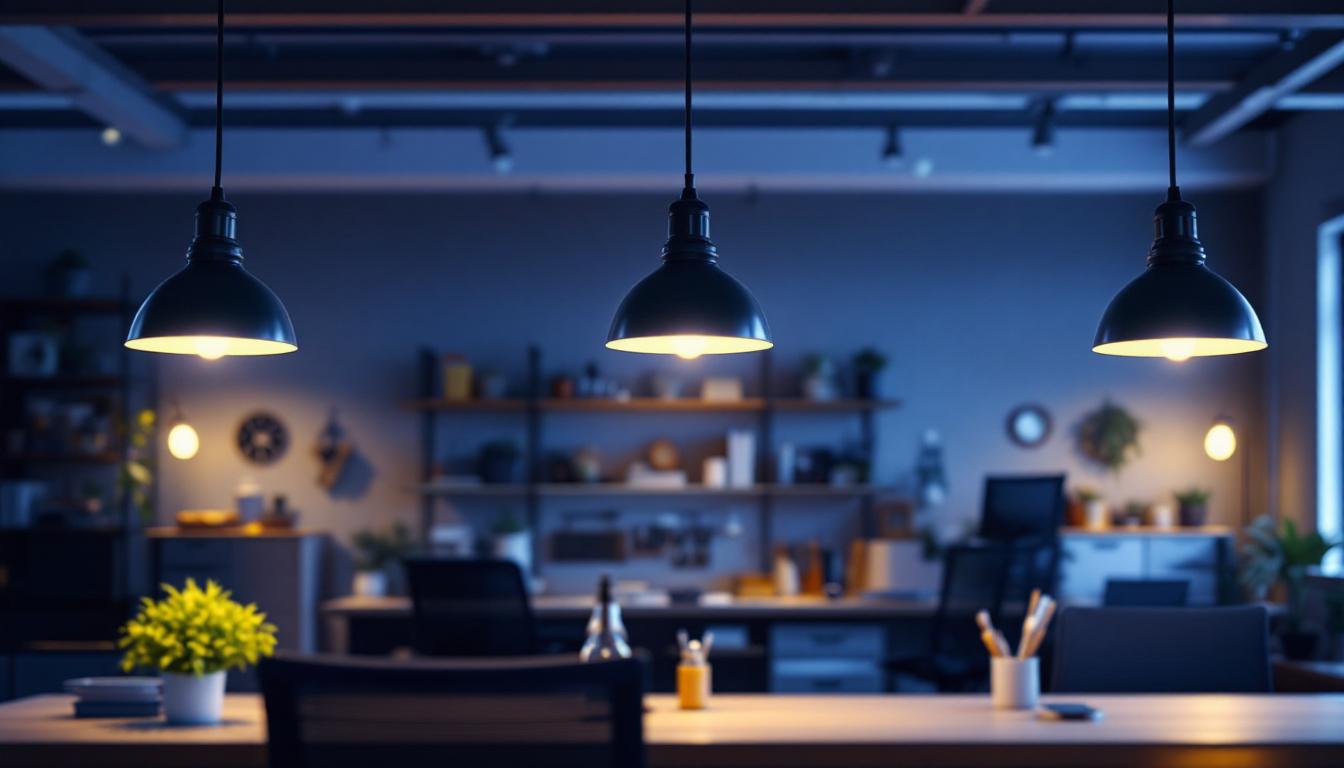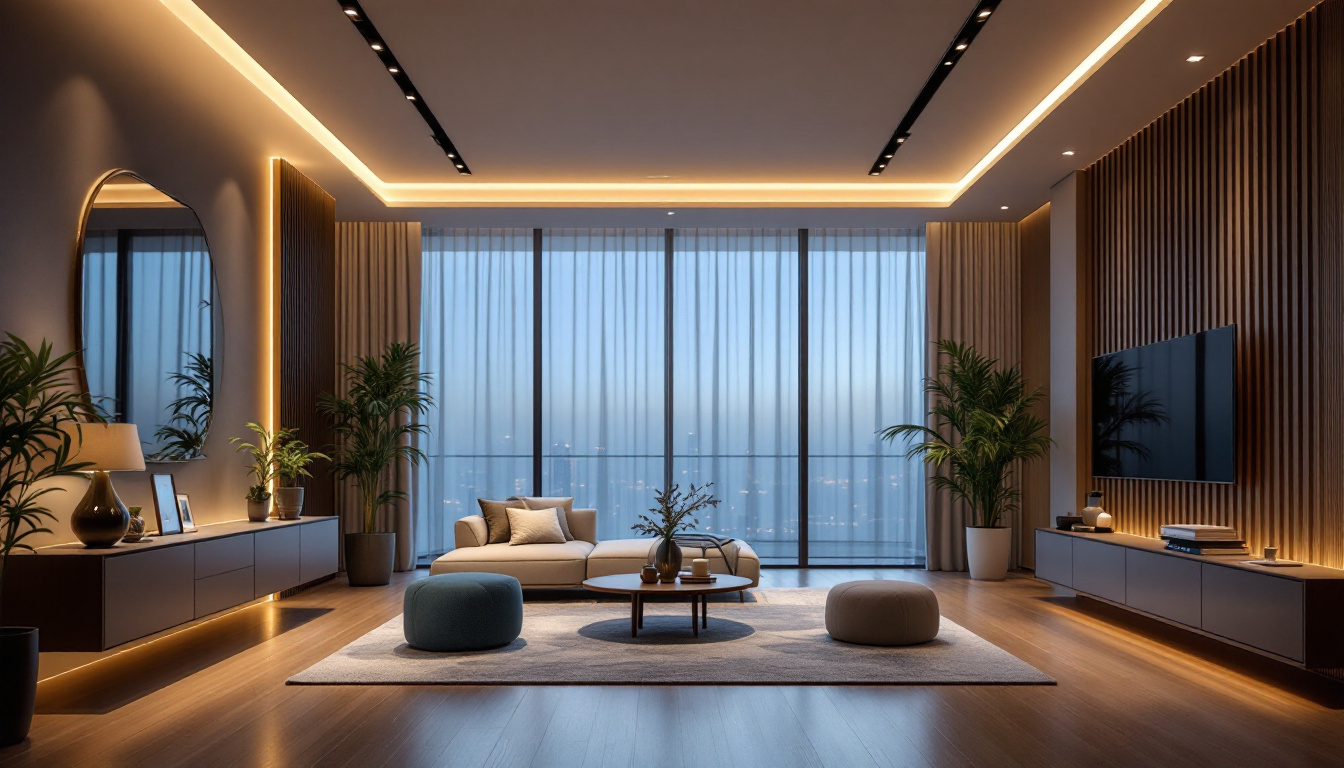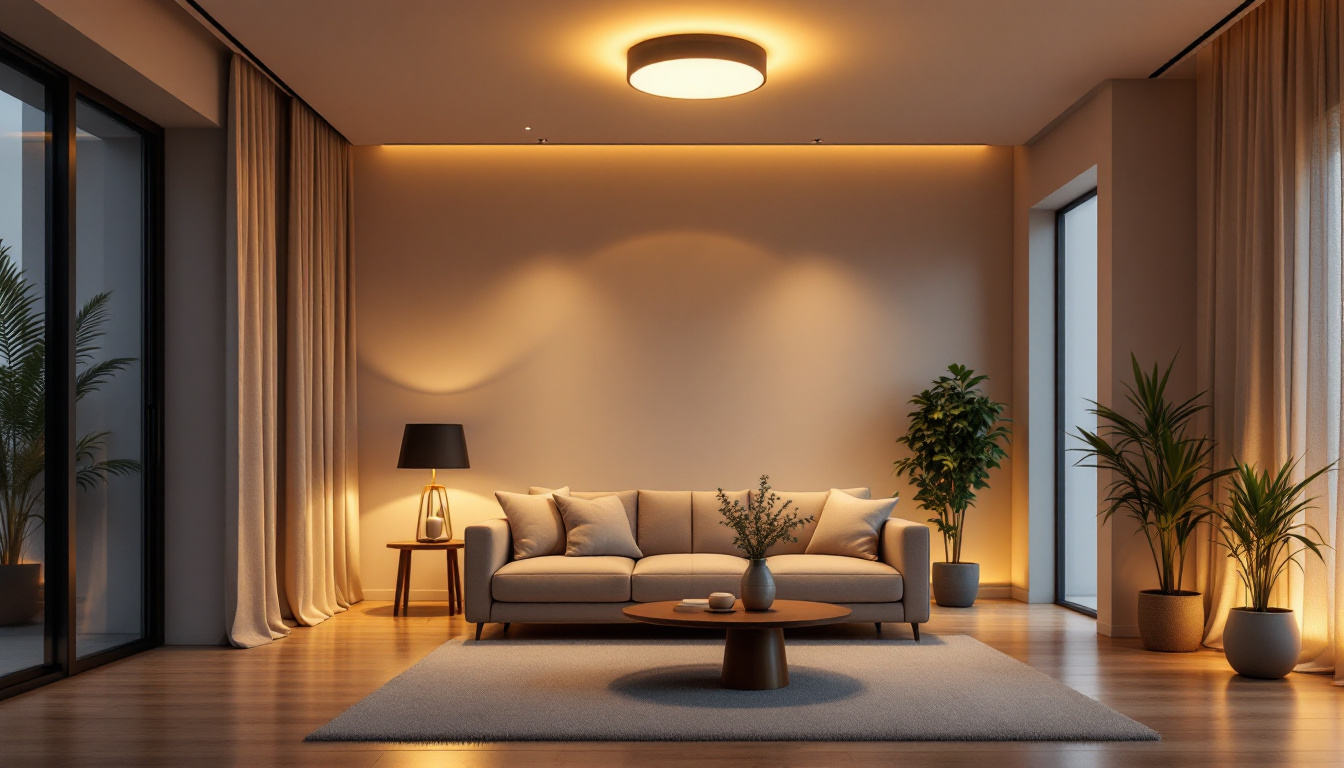
Lighting plays a pivotal role in the functionality and aesthetics of any workspace, particularly in commercial settings like workshops, warehouses, and retail spaces. Overhead shop lights are not just practical fixtures; they are essential components of effective lighting design. This article delves into the advantages of overhead shop lights, their types, and how they can transform lighting designs for contractors and business owners alike.
Overhead shop lights are fixtures installed on ceilings to provide ample illumination for various tasks. They are designed to distribute light evenly across a large area, making them ideal for spaces where visibility is crucial. These lights can significantly enhance productivity and safety in work environments, ensuring that every corner of the workspace is adequately lit for optimal performance.
Overhead lighting offers several benefits that make it a preferred choice for many contractors. First and foremost, it provides uniform illumination, reducing shadows and dark spots that can hinder work efficiency. This is particularly important in settings where precision is necessary, such as in workshops or assembly lines. Inadequate lighting can lead to mistakes, accidents, and even injuries, underscoring the importance of investing in quality overhead lighting solutions.
Additionally, overhead shop lights can be strategically placed to highlight specific areas or tasks, allowing for versatile lighting designs that cater to various needs. The ability to control brightness and color temperature further enhances their functionality, enabling contractors to create tailored lighting solutions for different environments. For example, warmer light tones can create a more inviting atmosphere for customer-facing areas, while cooler tones can enhance focus and alertness in work zones.
When it comes to overhead shop lights, there are several types to consider, each with its unique advantages. Understanding these options can help contractors choose the right fixtures for their projects. Selecting the appropriate lighting can not only improve visibility but also influence the overall ambiance and efficiency of the workspace.
In addition to these common types, there are also specialized options like pendant lights and track lighting that can be utilized in overhead configurations. Pendant lights can add a touch of style while providing focused lighting, making them suitable for creative spaces or retail environments. Track lighting, on the other hand, offers flexibility in directing light where it’s needed most, making it a versatile choice for changing workspaces or multi-functional areas.
Designing an effective lighting plan involves more than just choosing the right fixtures. Several factors must be considered to ensure optimal performance and satisfaction.
The size and layout of the space play a crucial role in determining the type and number of overhead lights needed. Contractors should assess the dimensions of the area, including ceiling height, to calculate the appropriate wattage and lumens required for adequate illumination.
Additionally, the layout of workstations and equipment should be taken into account. Areas that require more focused light may benefit from additional fixtures or adjustable lighting options to enhance visibility where it’s needed most. For example, in a workshop setting, task lighting can be strategically placed above workbenches to ensure precision during detailed tasks. Moreover, the use of layered lighting, which combines ambient, task, and accent lighting, can create a more dynamic and functional environment, allowing for flexibility in how the space is used throughout the day.
Color temperature, measured in Kelvin, affects the ambiance and functionality of a space. For instance, cooler temperatures (above 5000K) are often preferred in work environments as they mimic daylight and can enhance alertness and concentration.
On the other hand, warmer temperatures (below 3000K) create a more relaxed atmosphere, suitable for areas where comfort is prioritized. Contractors should work closely with clients to determine the best color temperature for their specific needs. This collaboration can involve testing different lighting samples in the actual space to see how they interact with the colors and materials present. Additionally, the brightness levels should be adjustable to accommodate various activities, ensuring that the lighting can adapt to both high-energy tasks and more subdued, social interactions.
In today’s world, energy efficiency is more than just a trend; it’s a necessity. Overhead shop lights, particularly LED options, offer significant energy savings compared to traditional incandescent or fluorescent lights. This not only reduces operational costs but also contributes to a more sustainable environment.
Contractors should consider incorporating smart lighting solutions, such as motion sensors and dimmers, to further enhance energy efficiency. These technologies allow lights to adjust based on occupancy and natural light levels, optimizing energy use without sacrificing performance. Furthermore, the integration of renewable energy sources, like solar panels, can further amplify sustainability efforts. By harnessing solar energy for lighting, businesses can significantly lower their carbon footprint while also enjoying the long-term financial benefits of reduced energy bills. As the demand for sustainable practices continues to grow, staying ahead of the curve with innovative lighting solutions will not only meet regulatory standards but also appeal to environmentally-conscious clients.
Proper installation of overhead shop lights is crucial for achieving the desired lighting effects. Adhering to best practices can ensure safety and functionality while maximizing the benefits of the lighting design.
The positioning of overhead lights is vital for achieving uniform illumination. Lights should be spaced evenly to avoid dark spots and ensure consistent lighting throughout the area. A common guideline is to place fixtures approximately 4 to 6 feet apart, depending on the light output and height of the ceiling.
Moreover, it’s essential to consider the height at which the lights are installed. Higher ceilings may require more powerful fixtures or additional lights to ensure adequate coverage, while lower ceilings can benefit from lower wattage options to prevent glare.
Electrical safety is paramount when installing overhead shop lights. Contractors should ensure that all wiring is up to code and that fixtures are securely mounted to prevent accidents. It’s advisable to consult with a licensed electrician for any electrical work to guarantee compliance with safety regulations.
Additionally, using fixtures with appropriate ratings for the environment, such as damp-rated lights in areas prone to moisture, can prevent potential hazards and extend the lifespan of the lighting system.
While functionality is a primary concern, the aesthetic appeal of overhead lighting should not be overlooked. Thoughtfully designed lighting can enhance the overall look of a workspace, creating an inviting atmosphere for employees and customers alike.
The design of the overhead lights can significantly impact the aesthetic of the space. Contractors should consider fixtures that complement the overall design theme of the area. For example, sleek, modern LED fixtures may be suitable for contemporary settings, while vintage-style fixtures can add character to more traditional environments.
Moreover, the finish and color of the fixtures can influence the perception of space. Lighter colors can make a room feel larger and more open, while darker finishes may create a more intimate atmosphere.
Incorporating dimming systems allows for greater flexibility in lighting design. This capability enables users to adjust brightness levels based on the time of day or specific tasks, enhancing both functionality and comfort.
Smart control systems can also integrate with overhead lighting, providing users with the ability to manage their lighting remotely. This not only adds convenience but also allows for energy savings by ensuring lights are only on when needed.
Regular maintenance of overhead shop lights is essential for ensuring their longevity and optimal performance. A well-maintained lighting system can provide consistent illumination and prevent unexpected failures.
Contractors should establish a routine inspection schedule to check for any signs of wear or malfunction. This includes examining fixtures for dust buildup, ensuring that all bulbs are functioning, and checking for any signs of electrical issues.
Regular cleaning of fixtures can also enhance light output and improve the overall appearance of the space. Dust and grime can significantly reduce the effectiveness of overhead lights, so a simple cleaning routine can go a long way in maintaining performance.
Over time, bulbs will need to be replaced to maintain optimal lighting conditions. Contractors should keep track of bulb lifespans and have a replacement plan in place, particularly in high-use areas.
In addition to bulb replacement, the entire fixture may need to be replaced if it shows signs of damage or inefficiency. Investing in high-quality fixtures from the outset can reduce the frequency of replacements and ensure long-term satisfaction.
Overhead shop lights are more than just functional fixtures; they are integral to creating effective and appealing lighting designs in commercial spaces. By understanding the various types of overhead lights, considering key design factors, and adhering to best installation practices, contractors can significantly enhance the quality of lighting in any workspace.
Furthermore, by focusing on energy efficiency and aesthetic appeal, contractors can create environments that not only meet operational needs but also foster productivity and well-being. Embracing the potential of overhead shop lights can truly be the secret to better lighting designs that stand the test of time.
Ready to elevate your lighting designs with the best overhead shop lights in the industry? Look no further than LumenWholesale, where we provide contractors with exceptional, spec-grade lighting products at unbeatable wholesale prices. Say goodbye to local distributor markups and hello to our extensive selection that meets the highest industry standards. With free shipping on bulk orders, you can trust that you’re getting premium lighting solutions at the best value, without any hidden fees. Make your next project shine with the quality, affordability, and convenience of LumenWholesale. Discover our range and take advantage of Wholesale Lighting at the Best Value today.

Discover essential insights into recessed lighting with our comprehensive guide tailored for lighting contractors.
Discover effective strategies for lighting contractors to tackle industry challenges in “Lighting Exit: Lighting Contractors, How to Overcome Challenges.” Learn how to navigate market shifts, manage project complexities, and enhance client satisfaction to ensure business success..

Discover how 6-inch LED ceiling lights are revolutionizing the lighting industry with their energy efficiency, sleek design, and versatile functionality.

Discover expert insights and best practices for using LED can lights in your projects with our comprehensive guide tailored for lighting contractors.